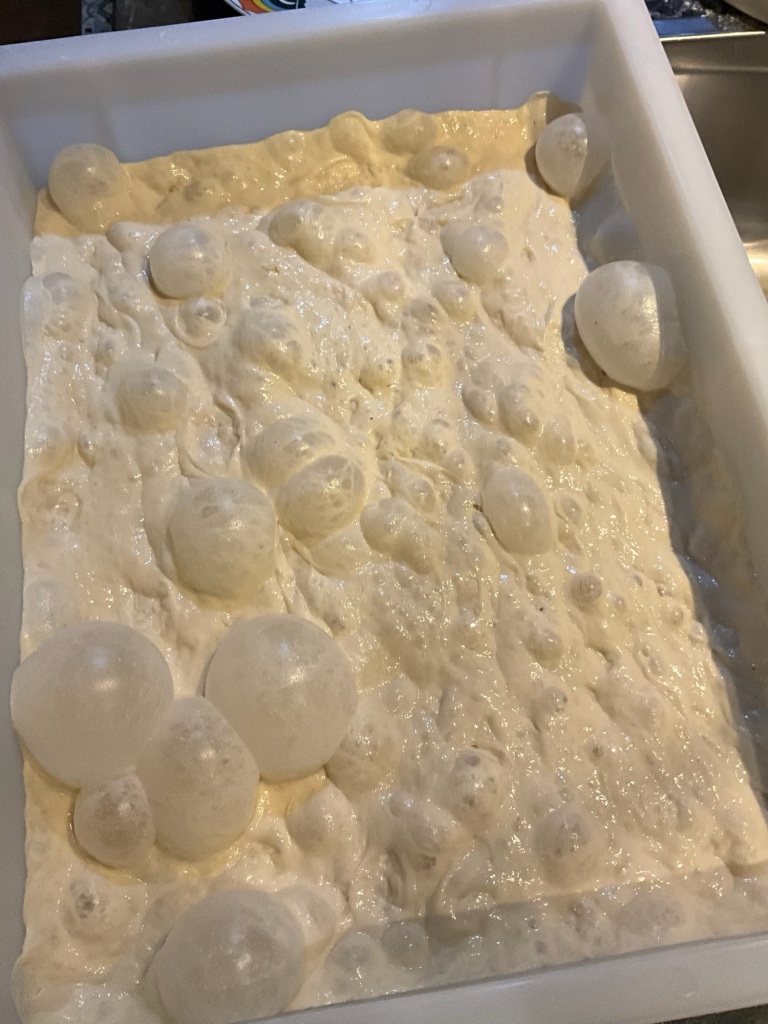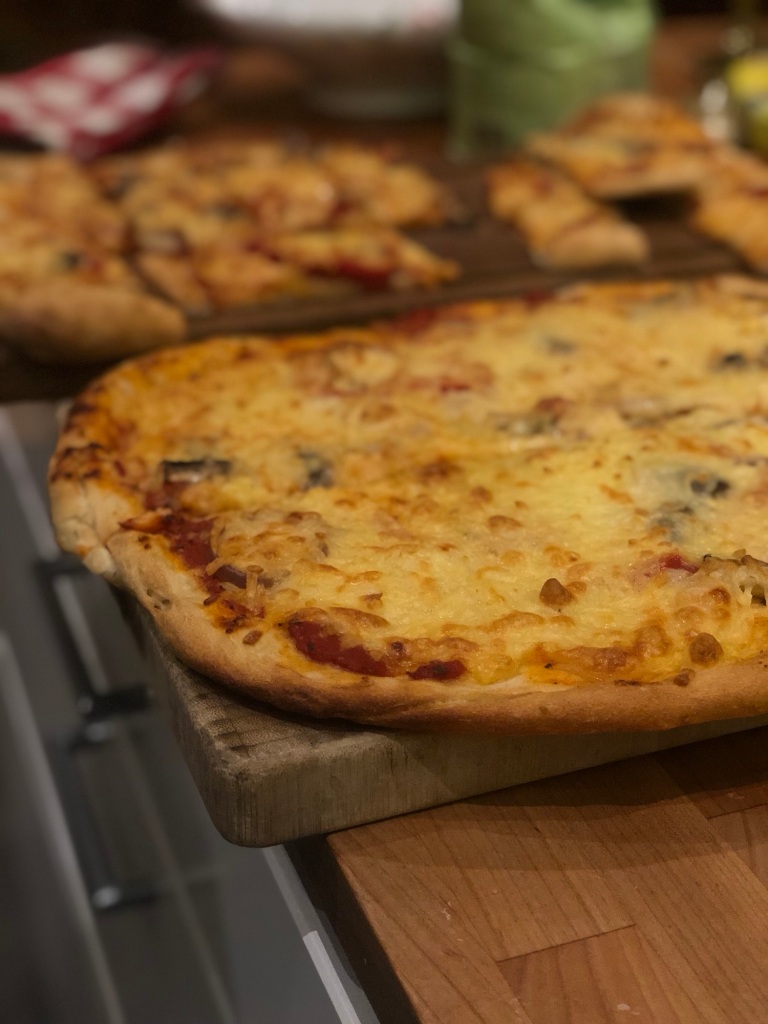Now it’s our turn! During The Verdmont Pizza experience you will learn how to make pizza dough the base, now to be clear there are as many way to make pizza as there are Pizza chefs so it does depend on where you are in Italy.
You might get it in a teglia a small baking dish the crust is thicker, some prefer a long slow rising while others do not, some Pizza has no yeast, some has very little. Some pizza you can throw about, while others you are better off leaving in on the surface to work it into a round or rectangle (yes that is sometimes better for loading into the oven).

So our Pizza is inspired by Napoletean Pizza, the dough does have a long 24 hour time to rise during which is folded several times during this process, I advise at least 5. It does not like being handled thrown about, over kneeded or played with. By doing any of those things you knock out all the air that has been cultivated during the rising. So our advice is be gentle but firm and confident.
We advise a 24 hour rising time but not longer and to achieve good results we strongly recommend using the right flour!!! As a basic rule it is best to use a quality strong flour, look for at least 14% protein content and this will go a long way to avoiding disasters! Long rising times tend to weaken and digest the gluten meaning it is more digestible and lighter for you but the texture is softer and can be difficult to handle.
In our previous post you saw famous Pizza chefs share their experience and opinions in what makes a perfect pizza. Almost all said digestibility, visual, taste and balance and durability (an odd one but as you eat the pizza after the third slice how do you feel?) Excessive thirst is not a good sign, gloopy pizza also not a good sign the based should remain firm and slightly crisp but not hard.



The secret is a combination of strong good quality flour, high water content and time.
Our recipe to serve 6 – 7 people is
1kg flour (make sure is good quality high protein content, available from us .
800ml water at room temperature
Yeast, you really need a tiny pinch maybe 1cm cubed no more
Salt optional
12-24 hours
Mix the water and yeast then flour with a spoon until smooth add salt at the end. Mix and leave covered in a bowl for 45 minutes. This starts your countdown to beautiful pizza! I recommend a minimum of 12 hours and a maximum of 24.
At 45 minutes and for up to 5 times during the process you will not kneed the dough you will fold it. I like the Italian term Piega di libri (book fold) in english some say slap and fold which is alot less charming.
Use Semola flour on you hands and surfaces not regular flour. The first time will be wet and sticky this is normal, don’t panic it will get easier. This video shows you how.
You will do this 4-5 times during the 24 hours or your chosen rising time.
Before you are ready to make pizza here is a quick check
Make sure the oven is as hot as it can go . Divide and fold your mini balls and leave to rest for 20 minutes until ready to shape.
Divide your dough, we recommend a ball larger than fist size or 200g for a pizza, however above we show you a focaccia style pizza where you divide among the oven tray and fill the tray. This recipe makes four trays in a standard oven. You can see we are doing that here as a home demo for those who may not have a pizza oven at hand.

We hope you enjoy making this delicious pizza foccacia.
We are happy to hear how you did so always tag us and follow on Instrgram or TIKTOK if you do try any of our recipes we would be delighted to hear from you.





















